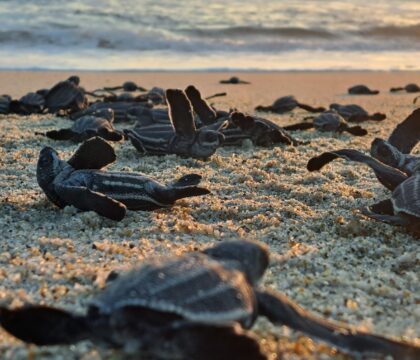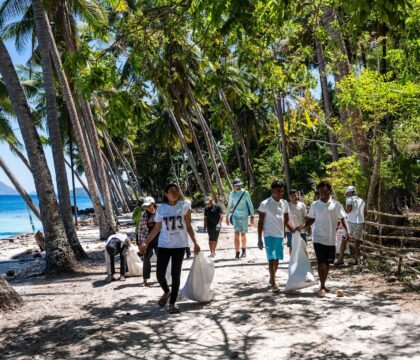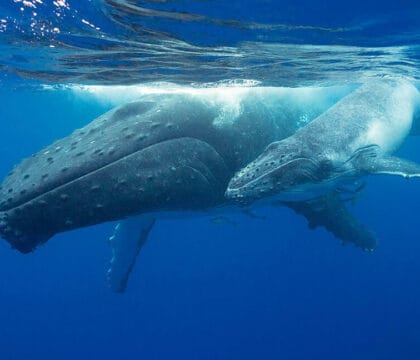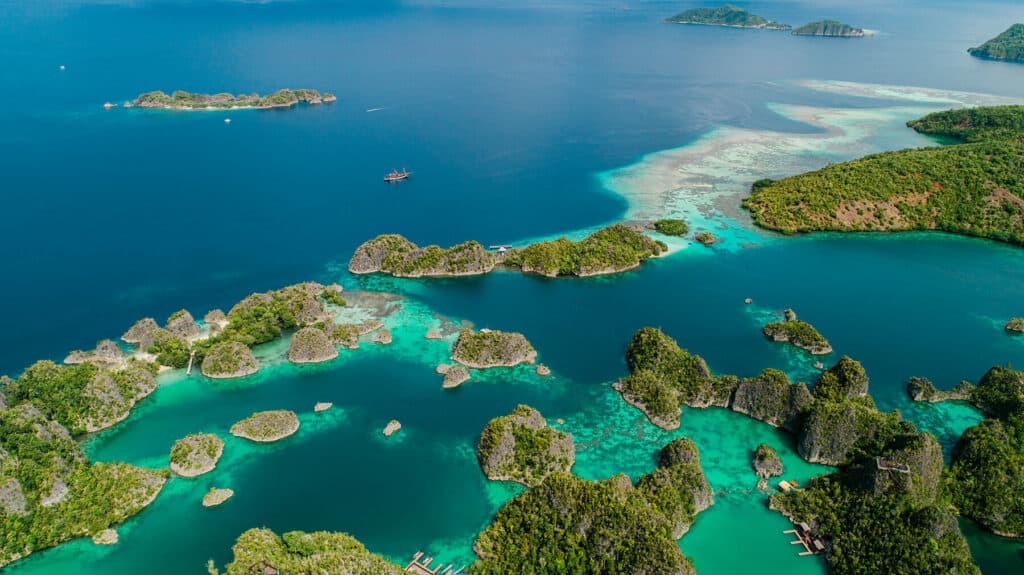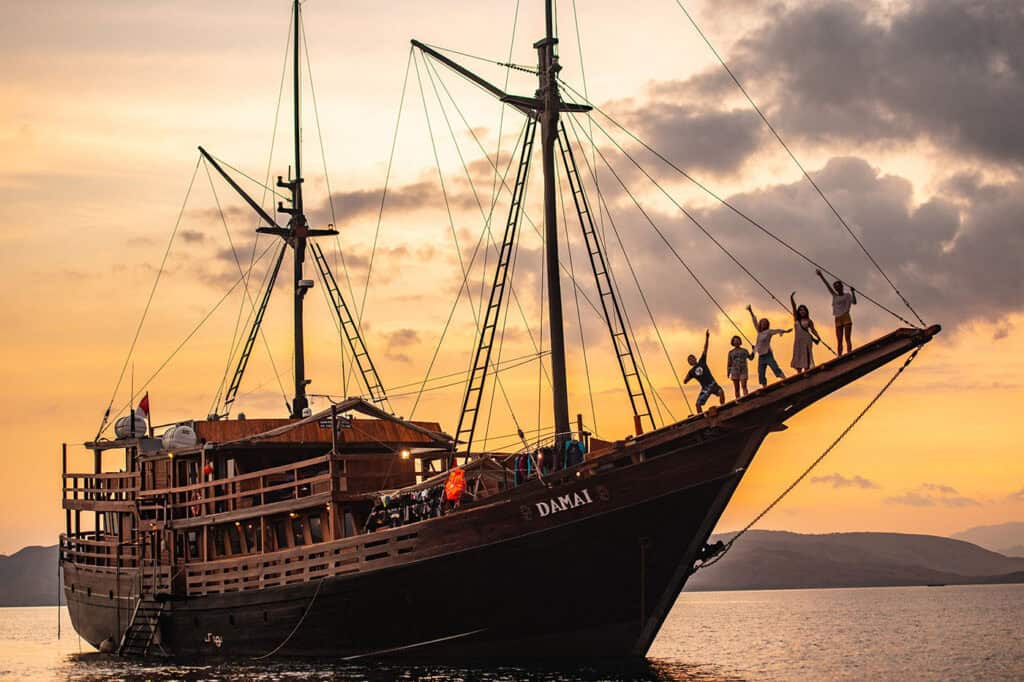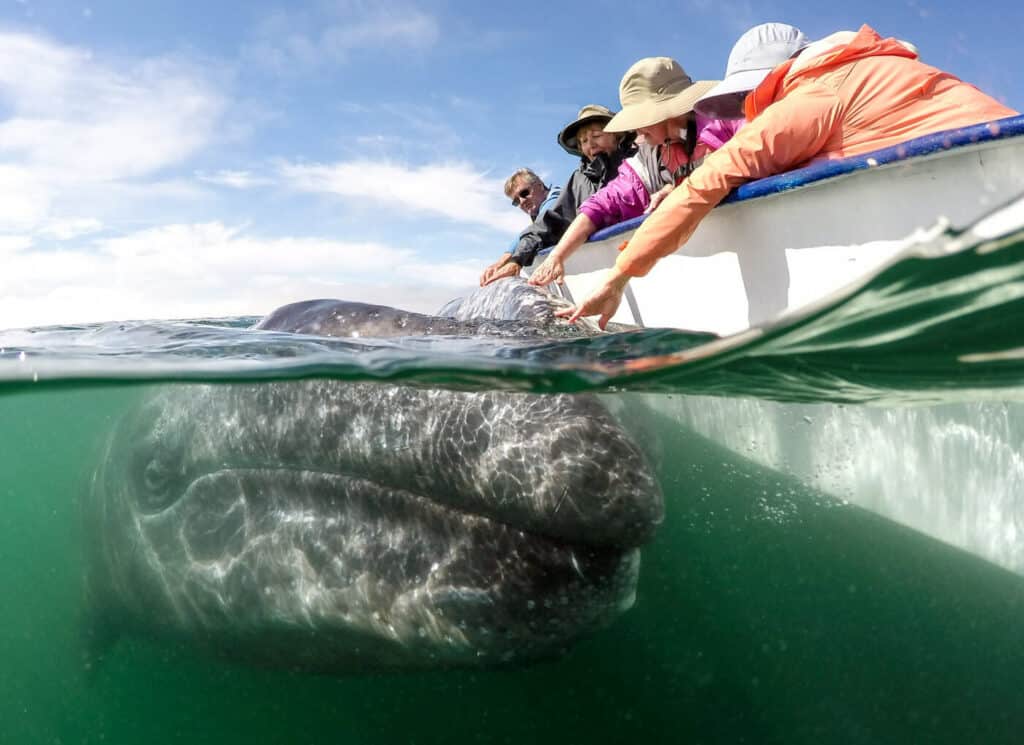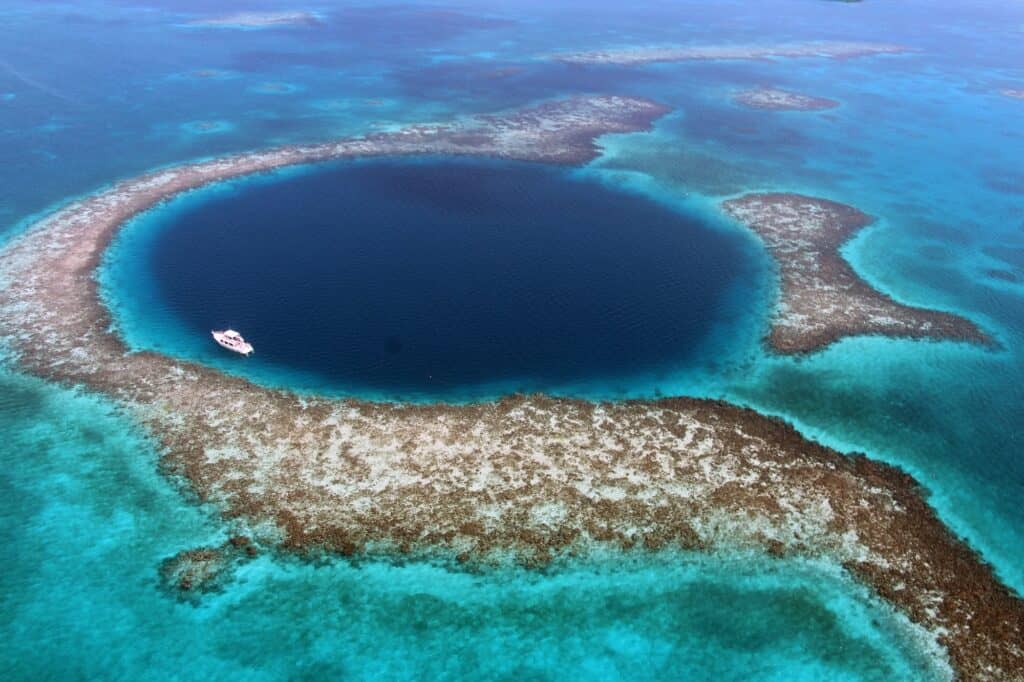May 4, 2016 • News Announcements, Program Updates
On Thursday, April 21, 2016, I joined a team from the California Whale Rescue Network, U.S. Coast Guard Station Monterey, and NOAA to disentangle a humpback whale that was tangled in 420 ft of blue steel line (from dungeness crab trap gear).
In theory, entanglement response is not complicated:
- You find the whale.
- You analyze the entanglement on the whale.
- You cut the gear off the whale and return it to the fisherperson.
- You share data you collected to assist with mitigation and prevention (the ultimate goal of entanglement response).
However, reality sets in. This is extremely dangerous work in difficult conditions. You have many different elements involved—weather, sea state, whale behavior, other animals, human safety, time of day, location, and more! It gets extremely complicated, and usually changes, very quickly. Plus, you need many different team members and varying skill sets to successfully complete all of the work (as it’s more than just cutting the line).
In my experience, the hardest part of disentangling is finding the whale.
Luckily, for this response, John Favazza of FV Okie Dokie reported the entanglement and stayed by the whale until members of the whale rescue network arrived. Kate Spencer of Fast Raft took over from John until team members from Moss Landing Marine Laboratories and NOAA Southwest Fisheries Science Center arrived and added telemetry to the entanglement on the whale so that it could be located the next day. Another team from California Whale Rescue arrived on scene later that day and took photo and video analysis to prepare for the disentanglement the next day. The entanglement itself was complex, leading through the mouth, wrapping twice over the whale’s back, and around both pectoral fins.
On our first approach to the whale, we attached two additional (red) poly balls to the entangling line on the whale to slow it down and keep it near the surface. My role for the disentanglement was to maintain our position near the whale, out of the danger zone. In order to do that, we motored up to the line trailing behind the whale (the line with the buoys and floats). We
grabbed a hold of that line, lifted our engine out of the water, and walked hand over hand to get as close to the whale as possible. Using the bow of our inflatable as a fulcrum, I was able to hold our position near the whale’s tail, while it was dragging us.
We made two cuts to each of the visible lines on the whale’s back, and all entangling line was confirmed free of the whale.
While this response had a happy ending, there are multiple whales still struggling with entanglements off the coast of California. And, it’s not always whales. Just a week later, on April 28, 2016 a leatherback turtle was disentangled after it was spotted carrying similar line.
I want to thank Oceanic Society for their support and the team of California Whale Rescue Network members (Point Blue Conservation Science, Alaska Whale Foundation, NOAA Southwest Fisheries Science Center, Fast Raft Safaris, Oceanic Society, Talbot Films, Whale Entanglement Team, and Moss Landing Marine Laboratories), US Coast Guard Station Monterey, and John Favazza.
All efforts were completed under NOAA’s Marine Mammal Health and Stranding Response Program Permit #18786

